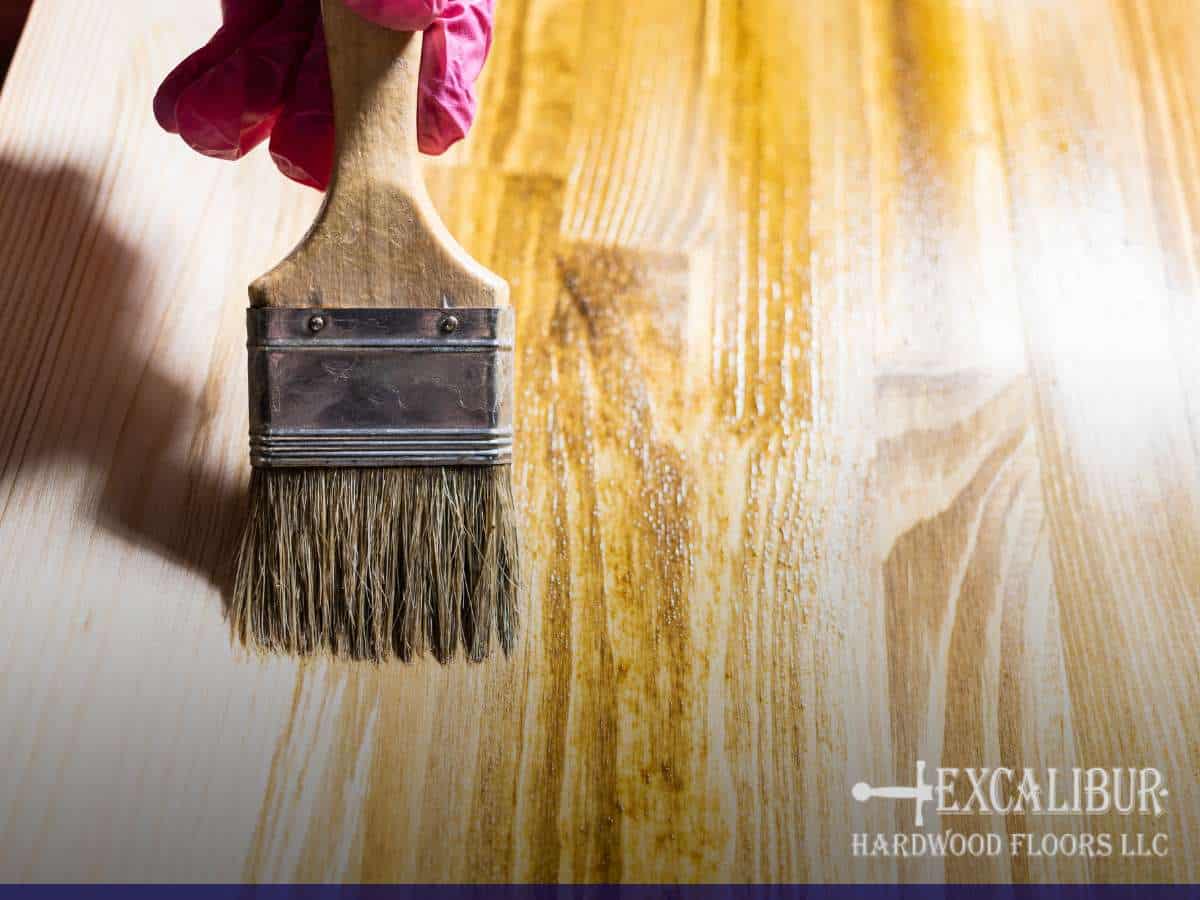Pros & Cons Of Using Polyurethane On Hardwood Floors
How To Maintain Polyurethane-Coated Hardwood Floors For Longevity
Hardwood floors are loved for their timeless beauty, but keeping them protected requires the right finish. Polyurethane, often called “poly,” is one of the most common choices. It provides a strong, protective layer that adds shine, resists scratches, and makes cleaning easier. However, like any finish, it has both advantages and limitations, which is why it’s important to understand how it performs in different settings.
This article breaks down the advantages and disadvantages of polyurethane on hardwood floors so you can decide if it’s the best option for your gym floor facility in Phoenix.

Understand The Pros & Cons
Oil-Based Polyurethane
Pros:
- Durability: Very tough and long-lasting, especially in high-traffic areas.
- Rich Appearance: It adds a warm, amber tone that enhances the wood’s natural beauty.
- It requires fewer coats: Generally requires only 2–3 coats for full protection.
Cons:
- Slow drying time: It can take 8–24 hours per coat to dry, extending project timelines.
- Odor and VOCs: Releases strong fumes that require good ventilation and safety precautions.
- Longer Curing Period: Takes weeks to fully harden, limiting floor use in the meantime.
Water-Based Polyurethane
Pros:
- Fast Drying: Dries in a few hours, making it easier to apply multiple coats in one day.
- Low Odor & Safer: Emits fewer VOCs, making it safer for families, pets, and the environment.
- Quick Curing: Reaches usable hardness faster than oil-based finishes.
Cons:
- Less Durable: May wear faster in heavy-traffic areas compared to oil-based.
- More Coats Required: Typically needs 3–4 coats to achieve comparable protection.
- Higher Cost: Often more expensive than oil-based options.
Best Use For Each Type
It basically depends on your specific needs and the environment where you’ll apply the coating. In essence, oil-based polyurethane is usually a good option for durability and a classic look, while water-based polyurethane is ideal for faster projects, lighter wood tones, and healthier indoor air quality.
Keep in mind that high-performance polyurethane options are available in both types, so you can find the right fit for your hardwood floors without sacrificing quality.
What Is Polyurethane?
Polyurethane is a type of clear protective coating formed from a chemical reaction between a polyol resin and an isocyanate curing agent. This type of coating is usually used on hardwood floors to improve their durability and appearance.
Its plastic-like layer over the wood acts as a shield against scratches, stains, moisture, and daily wear. Unlike penetrating oils or waxes that soak into the wood, polyurethane sits on top of the surface, creating a hard, protective film.
Types Of Polyurethane: Oil-Based vs Water-Based
There are two main types of polyurethane: oil-based and water-based. Both options offer incredible protection, but they differ in appearance, durability, and maintenance needs.
Oil-based polyurethane is a good option if you want maximum durability and a rich, warm look, while water-based polyurethane is better if you prefer a quicker, cleaner application and a more natural finish.
Is Polyurethane Long-Lasting & Resistant?
Yes, polyurethane is known as both long-lasting and highly resistant when applied properly.
That’s because its formula creates a protective barrier over hardwood floors that protects them from almost any type of damage, including stains. Plus, it can easily last at least 10 years or even 15 if you opt for oil-based polyurethane.
Both types of polyurethane coatings also resist moisture better than natural oils or wax finishes, making spills easier to clean without damaging the wood. However, it’s worth noting that once damaged, polyurethane finishes can be difficult to repair in small sections—often requiring refinishing across larger areas to maintain consistency.
Application Process & Common Pitfalls
To apply polyurethane to hardwood floors, you will need a high-quality brush or roller, a sanding block, fine-grit sandpaper, a vacuum cleaner, and a tack cloth. You’ll also need the polyurethane finish itself, a stir stick, and painter’s tape to protect baseboards and surrounding areas.
Step-By-Step Application Process
- Prepare The Space & The Floor
Clear the room, mask vents/doors, and ensure good ventilation. After that, clean the floor thoroughly. Remove all dirt and debris using a vacuum cleaner and a tack cloth.
- Sand To Bare Wood
Sand progressively (e.g., 36/60/80/100–120), then buff. Vacuum thoroughly and dry-tack until dust-free.
- Apply The First Coat
Pour a small line and work with the grain using a T-bar or roller. Keep a wet edge, use thin, even coats, and avoid over-working to prevent bubbles.
- Dry Time
Remember that water-based typically needs 2–4 hours for drying. Oil-based needs between 8–24 hours. Follow product labels for your conditions.
- Sand Between Coats
Lightly abrade with 220–320 grit or a maroon pad. Vacuum and tack to remove all dust.
- Repeat Coats
Water-based: 3–4 thin coats. Oil-based: 2–3 coats. Maintain the same technique and the dry/abrade cycle.
- Initial Cure & Use
Water-based: light foot traffic ~24 hrs. Oil-based: ~48 hrs. Install felt pads; remember to lift furniture (don’t drag it!)
- Cleanup & Disposal
Water-based cleans with water. Oil-based uses mineral spirits; store oily rags in a sealed metal container to prevent combustion.
Common Mistakes You Should Avoid
To achieve a smooth and durable polyurethane finish on hardwood floors, avoid these common mistakes:
- Skipping sanding between coats: Sanding is essential for proper adhesion and an even texture.
- Applying overly thick coats: Thin, even coats prevent drips, bubbles, and an uneven appearance.
- Insufficient drying time: Always adhere to the manufacturer’s drying recommendations to ensure the finish’s durability and aesthetic.
Maintenance Tips
Maintaining the beauty of your poly-coated hardwood floors starts with regular cleaning and proper schedule. That’s why we’ve created these short lists of some care tips considering the type of maintenance (daily, weekly, etc):
Daily/Weekly
- Microfiber dust mop; vacuum with soft brush.
- Wipe spills immediately; avoid standing water.
- Shoes off when possible; no high heels/cleats.
Monthly
- Lightly damp-mop with a pH-neutral hardwood cleaner.
- Skip vinegar, ammonia, oil soaps, paste wax, steam, and acrylic polishes.
Protect Surfaces
- Entry mats/runners; breathable rug pads marked “finish-safe.”
- Felt pads on all furniture; lift—don’t drag.
- Trim pet nails; mats under bowls/litter.
Environment
- Keep 35–55% RH year-round.
- Use blinds/UV shades; rotate rugs to prevent uneven ambering/fade.
Small Issues
- Scuffs: white pad + approved cleaner.
- Light scratches/water marks: manufacturer repair kit.
- Worn traffic lanes: schedule a screen-and-recoat before wood shows.
Longer Term
- After refinishing, wait until full cure before rugs (per label).
- Recoat cadence: every ~3–5 years (water-based) or ~5–7 years (oil-based), longer if low traffic.
Cost Considerations
The total cost depends on many factors that go beyond the can price. One of these factors is the floor condition, as repairs and a full sand to bare wood add an extra due to the labor and time needed. Square footage and tricky layouts (hallways, closets, lots of edges) slow application and raise labor even if material use is similar.
Product choice is another important factor. Oil-based poly usually costs less per gallon and needs fewer coats, but dries slowly, emits more VOCs, and may require extra ventilation or temporary relocation, which could lead to hidden costs. Water-based poly often costs more and may need an extra coat, yet it dries fast and reduces downtime and labor hours.
Lastly, you also have to consider expertise. DIY can save on labor, but rentals, consumables, and mistakes (swirls, bubbles, lap marks) can erase savings. That’s where pros can be more profitable, as they bring dust control, correct sanding sequences, and warranties.
Get Professional Guidance From Hardwood Floor Experts
For clear guidance and a finished plan that fits budget, timeline, and design goals, contact Excalibur Hardwood Floors. Our team of gym floor specialists in Phoenix can evaluate current conditions, recommend the right system and sheen, and deliver dust-controlled, warranty-backed work. Schedule a consultation now to get a precise estimate and a floor that performs and looks its best!





